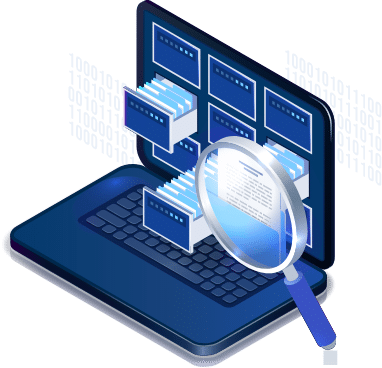Billions of dollars are spent annually on business intelligence (BI) tools, with the promise of driving smarter, data-driven decisions. But for many organizations, these investments yield little more than frustration – because their data isn’t up to par.
Poor-quality data sabotages business intelligence efforts before they even begin. This is why, despite the widespread proliferation of advanced BI technologies, many companies continue to struggle with gaining actionable insights and, as a result, make efficient decisions.
BI systems may provide powerful analytics, but if the underlying data is inaccurate, fragmented, or incomplete, those insights become meaningless.
As digital transformation initiatives ramp up across industries, businesses are learning (often the hard way) that the success of their BI efforts hinges not on technology alone—but also on the quality of the data powering it.
How Digital Transformation is Changing the Rules for Business Intelligence
As the professional landscape continues to evolve, companies across industries are reimagining their business processes, operations, and customer experiences through digital technology. Business intelligence plays a key role in this transformation. In fact, it is the backbone for data-driven decision-making. However, as organizations strive for greater strategic advantage, many are discovering that their biggest challenge isn’t the tools themselves – it’s the data feeding them.
The Evolution of Business Intelligence
There was a time when BI was about generating periodic reports or running basic queries against a static database. It was a tool for hindsight – answering the question, “What happened?” But as businesses started to increasingly rely on real-time, actionable insights, the role of BI has shifted dramatically.
In contrast to traditional business intelligence technology, modern BI tools incorporate advanced analytics, and technologies like machine learning, and AI to not only analyze past performance but also predict future trends, identify opportunities, and suggest optimal actions. These advanced tools empower businesses to make faster, smarter decisions based on real-time data, shifting the focus from “reporting” to “forecasting.”
As a result, BI is no longer a back-office function but is deeply integrated into all areas of business strategy – from marketing and sales to operations and customer service.
The Role of Data in Modern BI: Why Data Quality is the Make-or-Break Factor for BI Success
In this digital-first environment, data is the lifeblood of business intelligence. However, as mentioned earlier, for many companies, the data they rely on is often fragmented, inconsistent, or even inaccurate. Whether it’s customer information stored in silos across different departments, outdated data from legacy systems, or incomplete datasets, poor-quality data can undermine even the most sophisticated BI tools.
While modern BI systems are capable of processing vast amounts of data at incredible speeds, the value they provide depends entirely on the quality of the data being fed into them. Inaccurate data, for example, can lead to erroneous conclusions, which in turn can result in poor business decisions. A predictive model that is built on flawed data is no better than a guess, and a dashboard that relies on inconsistent or incomplete data will mislead rather than inform.
As BI systems become more complex and integrated, the risk of data quality issues compounding across systems and processes increases.
The Growing Demand for High-Quality Data
As digital transformation accelerates, the pressure to deliver high-quality, actionable insights becomes more intense. Real-time data has the potential to power next-level analytics, but only if that data is clean and accurate. To gain a competitive edge, organizations must ensure that their data is not only plentiful but also reliable and well-integrated across systems.
The growing reliance on BI to drive decisions makes data quality an indispensable asset. Businesses need data that is:
- Clean: Free from errors, duplicates, and inaccuracies.
- Integrated: Unified across systems to provide a single source of truth.
- Timely: Updated in real-time to reflect the latest information.
Organizations that meet these criteria aren’t just able to extract actionable insights, they also position themselves to respond faster to market changes, identify emerging opportunities, and mitigate risks effectively.
The Biggest Barriers to Data Quality in Business Intelligence
As we have established by now that business intelligence systems thrive on accurate and reliable data. However, achieving this level of quality is often easier said than done. Unfortunately, businesses often face numerous hurdles that complicate the task and hamper their ability to harness the full potential of their data and, ultimately, business intelligence tools they use. Among the most common challenges are:
Data Silos
Different departments storing and managing data independently is a fairly common practice across industries. However, it leads to fragmented and inconsistent information. If the sales team of an organization has a different version of customer data while the marketing team operates with another, the result will only be misalignments and inefficiencies.
Duplication
Duplicate records often arise when data is collected and stored across multiple systems. This can create confusion and lead to wasted resources, such as sending multiple marketing emails to the same customer or misreporting metrics.
Inaccurate or Outdated Data
Errors and omissions in datasets – such as outdated customer contact details, incomplete profiles, or incorrect financial information – can lead to misinformed business decisions.
Integration Issues
Legacy systems and modern platforms often fail to communicate effectively. When organizations rely on a mix of older systems and newer technologies, consolidating and analyzing data often becomes complex, time-consuming, and prone to errors.
How Poor Data Quality Derails BI Success
The consequences of poor data quality for business are multifaceted and far-reaching. It affects everything from day-to-day operations to long-term strategy. The key impacts include:
Flawed Decision-Making
Since BI tools rely on data to provide insights, bad data can lead to false insights, which in turn result in erroneous conclusions and costly mistakes.
Negative Customer Experiences
Inconsistent or incomplete data can hinder personalization efforts, which can leave customers feeling undervalued and disengaged.
Operational Inefficiencies
Duplicate or inaccurate data clogs workflows and wastes valuable resources. These inefficiencies lead to delays, increased costs, and avoidable frustrations for employees and customers alike.
Missed Opportunities
With unreliable data, businesses may fail to identify emerging trends, respond to market shifts, or capitalize on opportunities in time.
Leveraging Data Matching and Cleansing Tools to Enhance BI Outcomes
To overcome these data challenges, businesses need powerful solutions that can clean, deduplicate, and integrate data across systems, better yet, tools that can automate these data quality processes.
DataMatch Enterprise (DME), a data quality tool developed by Data Ladder, offers a comprehensive solution for ensuring data accuracy and consistency.
How DataMatch Enterprise Solves Data Quality Challenges
DME leverages advanced data matching and cleansing algorithms to help organizations:
- Eliminate Duplicates: Automatically identify and remove duplicate records.
- Integrate Data: Consolidate fragmented data from multiple departments or platforms.
- Clean and Enrich Data: Correct inaccuracies, fill in missing values, and standardize data formats to improve reliability.
- Create a Unified View: Combine data from multiple sources or platforms to create a single, reliable source of truth and ensure a unified view of key performance indicators.
- Ensure Real-Time Accuracy: Keep datasets up-to-date to enable BI systems to generate timely and actionable insights.
By using DataMatch Enterprise, businesses can overcome the challenges of fragmented, poor-quality data and unlock the full potential of their BI systems. It helps ensure smarter decisions, more efficient operations, and enhanced customer experience.
Data Matching and Cleansing as Catalysts for Transformation
Data matching and cleansing processes do not just clean up datasets – they serve as catalysts for a broader transformation that drives improved decision-making, predictive data analysis, and personalized customer experiences.
These data quality processes help ensure that organizations have a unified, accurate view of their operations, customers, and markets, which is essential for making informed decisions in real time. Efficient implementation of these processes result in:
Improved Accuracy
One of the key benefits of data matching and cleansing is the ability to ensure data accuracy. By reconciling datasets and removing redundancies and inconsistencies from them, businesses can trust that their BI insights reflect the true state of their operations. This accuracy is critical for making informed strategic decisions that drive business success.
Better Analytics
When data is accurate and consistent, it allows organizations to uncover deeper, more meaningful insights, identify trends, and more precise predictions. As businesses increasingly rely on data-driven insights to guide their strategies, having a solid data matching process in place is essential to unlocking the value hidden in their datasets.
Faster Time to Insights
With a data matching and cleansing tool in place, organizations can streamline their data preparation process. For example, automating the reconciliation of disparate datasets allow businesses to reduce the time spent on data cleaning, which then enables them to generate insights faster. This acceleration in the time-to-insight allows businesses to be more agile in responding to market trends and customer needs.
Empowering Predictive Analytics and Strategic Insights
With a solid foundation of clean, well-organized data, businesses can move beyond basic reporting to engage in predictive analytics – forecasting future trends, customer behaviors, and market shifts. For example, a retail company can predict customer buying patterns and, on the basis of that, optimize inventory management and supply chain operations. Similarly, financial institutions can use predictive models to identify potential risks and opportunities, ensuring better financial planning and decision-making.
Predictive models can give organizations a forward-looking view of their business landscape. However, they rely on accurate, matched datasets to make forecasts with confidence.
Enabling Customer Personalization
One of the most impactful results of efficient data matching and quality processes is the ability to deliver personalized customer experiences. By consolidating customer data across various touchpoints and ensuring its accuracy, businesses can build a 360-degree view of each customer. This holistic view, achieved through data visualization tools, enables highly targeted marketing, personalized recommendations, and more effective customer engagement strategies.
Personalized experiences not only increase sales and revenue in the short-term but also foster customer loyalty, which is crucial for long-term business growth and success.
The Road-Ahead: Committing to Data Quality for Long-Term BI Success
To remain competitive, organizations must be able to anticipate the innovations and trends that will shape the future of BI and data management. To help with that, in this section, we’ll explore the market trends that will drive future BI strategies and discuss how businesses can position themselves to thrive in a rapidly changing scenario.
Market Trends Shaping the Future of BI and Digital Transformation
As automation, real-time business analytics, and AI integration become integral to business operations, the importance of high-quality data will only intensify. The key trends shaping the future of BI and digital transformation include:
1. Automation
With an increasing reliance on automated processes, businesses will need to ensure their data is accurate and consistently structured to fuel automation systems. Automated decision-making processes, predictive models, and reporting tools will rely on clean, matched, consolidated data to generate meaningful insights. Hence, the role of data matching and cleansing tools will only evolve. If you want to stay ahead of the competition, invest in data quality now!
2. Real-Time Analytics
With organizations seeking to make decisions based on up-to-the-minute data, the demand for real-time insights is growing across industries. Real-time analytics can only deliver value when the underlying data is timely and accurate. In this future-focused environment, data quality processes must be agile, so companies can continually cleanse and match data as it is collected from diverse sources.
3. AI and Machine Learning
The integration of AI and machine learning into BI is enabling more advanced predictive analytics and decision-making. However, these technologies require clean, high-quality datasets to function effectively. As artificial intelligence algorithms become more sophisticated, businesses must ensure that their data quality tools are capable of handling the complexities of AI-driven analytics.
Along with these, businesses must also stay on the lookout for new innovations in data quality management. For instance, blockchain technology could play a role in verifying the accuracy and integrity of data, ensuring that organizations can trust their datasets for decision-making. Additionally, advancements in natural language processing (NLP) could enhance data cleansing and matching capabilities, improving the process of linking unstructured data across multiple sources.
Best Practices for Ensuring Long-Term Success
To stay ahead in the evolving landscape of BI and digital transformation, businesses should adopt the following best practices for data quality:
1. Invest in Scalable Data Quality Solutions
As data volumes grow and new technologies are integrated, businesses must choose data quality tools that can scale with their needs. Scalable solutions will ensure that as BI systems expand, they remain supported by accurate, high-quality data.
2. Implement Data Governance
Establishing strong data governance frameworks will help ensure that data quality standards are met consistently. Data governance ensures that data management practices remain aligned with business objectives, supporting long-term BI success.
3. Focus on Real-Time Data Management
Given the increasing importance of real-time insights, businesses should prioritize real-time data matching and cleansing tools that can keep up with fast-moving data streams. This proactive approach will ensure that the data powering BI systems is always up-to-date and accurate.
4. Stay Informed of Emerging Technologies
Keep an eye on emerging trends in AI, blockchain, and machine learning, as these technologies will drive future innovations in BI and data quality management. Staying ahead of the curve will allow businesses to integrate these technologies smoothly into their BI strategies.
Why Prioritize Data Quality Now?
The demand for reliable, clean data is only going to increase as digital transformation continues to redefine industries. To stay ahead, businesses must act now to transform their raw data and build a strong foundation for future BI success. Inaccurate, inconsistent, or incomplete data will only hinder the effectiveness of AI, real-time analytics, and automated systems. Companies that wait too long may find themselves struggling to integrate new technologies or missing out on valuable insights.
Building the Future with Data-Driven Intelligence
As businesses continue to invest in digital transformation efforts, aligning business intelligence (BI) initiatives with transformation goals is essential for long-term success. High-quality data forms the foundation upon which all successful BI efforts are built. Ensuring data accuracy, consistency, and reliability is not just a technical necessity—it is a strategic advantage in a world driven by data.
Working with reliable business intelligence vendors and incorporating data matching and cleansing tools like DataMatch Enterprise into your BI strategy enables more informed decision-making, enhanced predictive capabilities, and a deeper understanding of your customers. The right data quality tools empower business users to leverage their data more effectively, unlocking valuable insights that can drive innovation and competitive advantage.
We encourage you to assess the state of your own data quality and evaluate how it impacts your BI strategy. Is your data working for you, or is it holding you back?
At Data Ladder, we are committed to helping organizations like yours thrive in an increasingly data-driven world. As a trusted partner in your digital transformation, our solutions are designed to ensure that your data quality initiatives continue to drive success in all aspects of your business intelligence.
Take the first step today – evaluate your data quality and prepare for a future where your BI strategy is powered by data you can trust. Contact us now to get professional insights into your data quality and personalized solutions to power your BI and digital transformation strategy with data with you can trust.










































